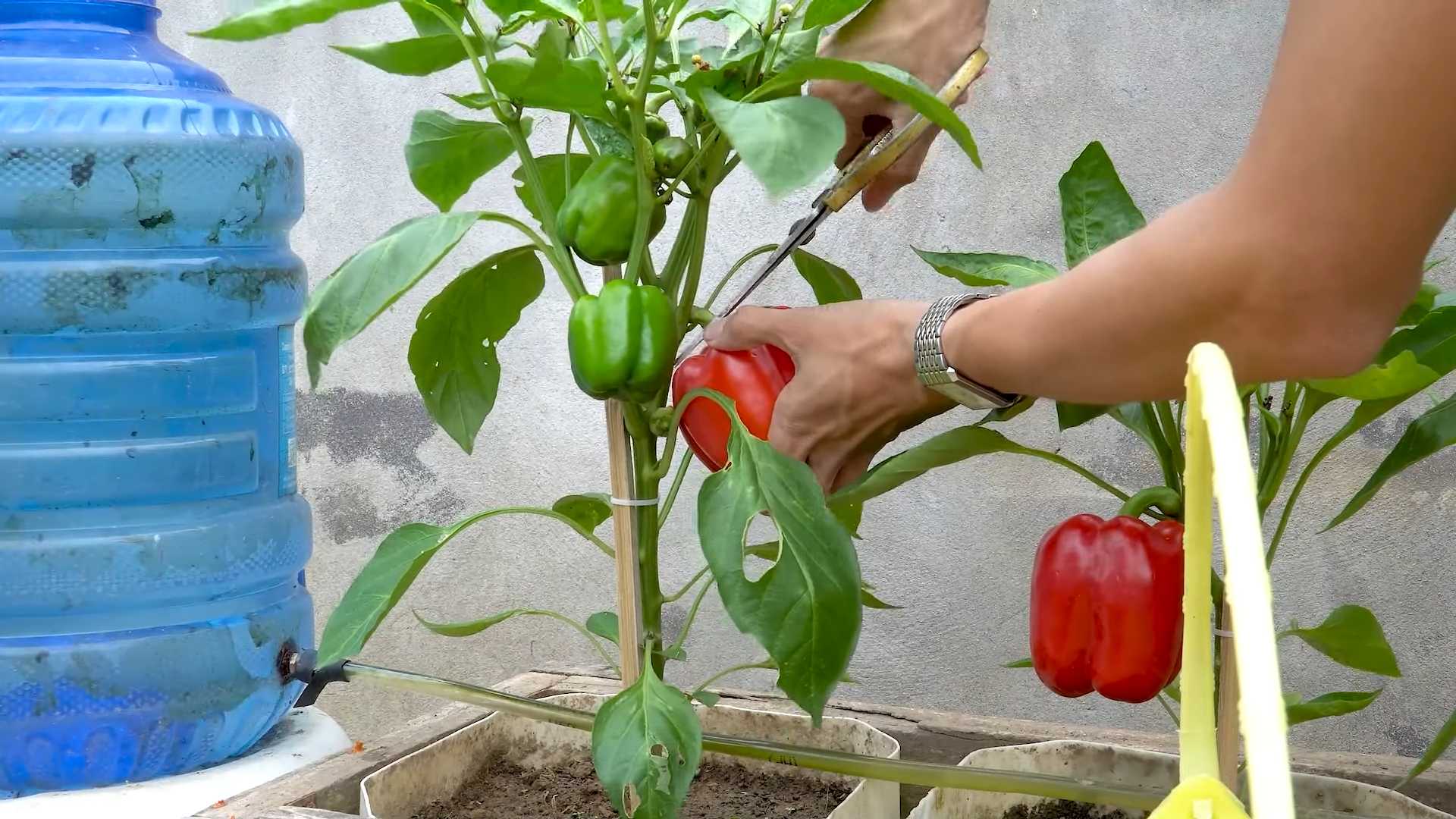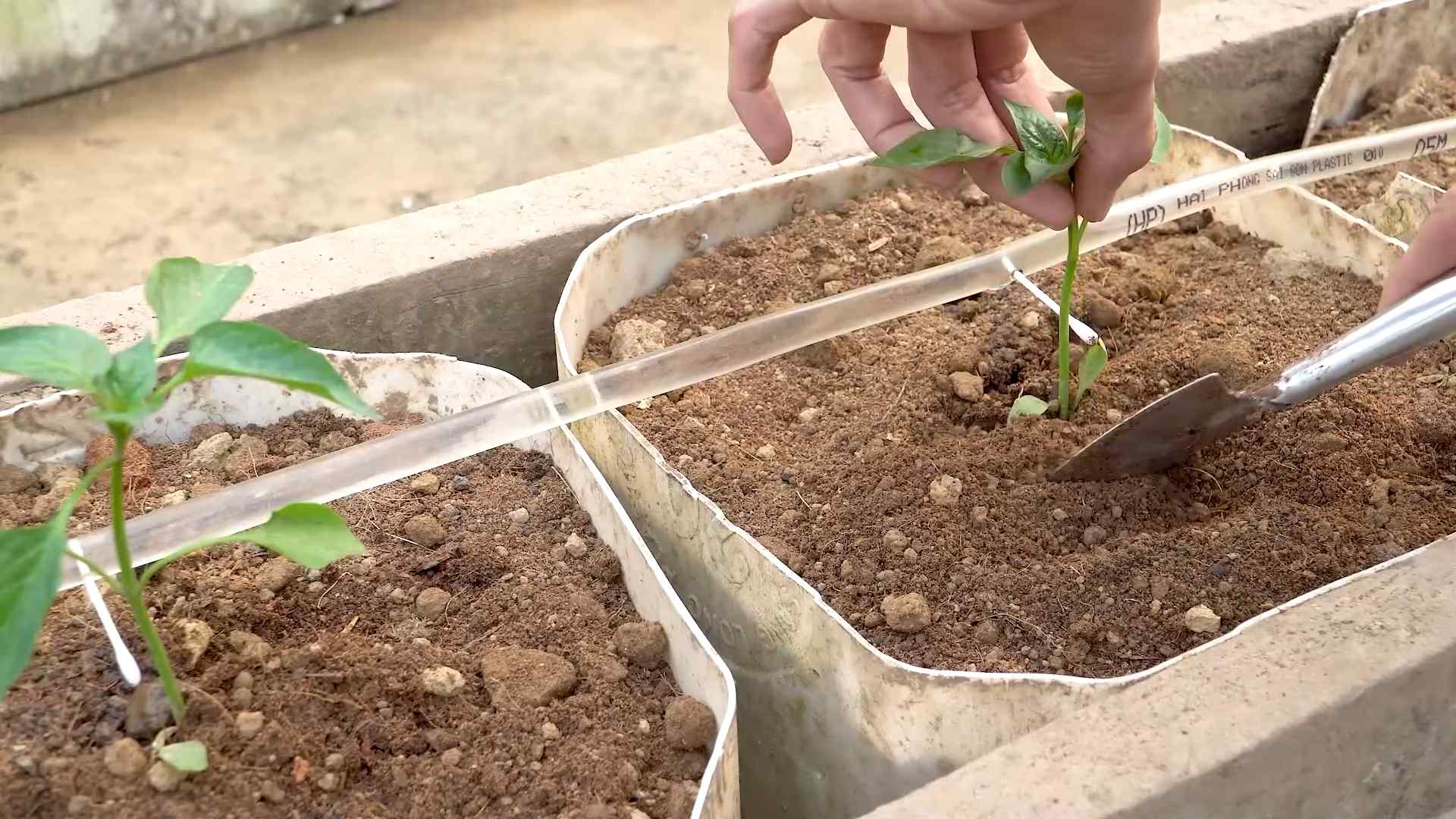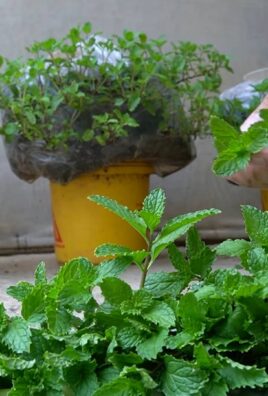Bell Pepper Container Gardening Tips: Ever dreamed of harvesting vibrant, juicy bell peppers right from your own patio or balcony? I know I have! There’s something incredibly satisfying about growing your own food, and with a few clever tricks, even those of us with limited space can enjoy the bounty. Forget those expensive, often bland, grocery store peppers – imagine the flavor explosion of a homegrown bell pepper in your next salad or stir-fry!
Growing bell peppers in containers isn’t just a modern trend; container gardening itself has roots stretching back to ancient civilizations. From the Hanging Gardens of Babylon to the elaborate potted plants of Victorian England, people have always found ways to cultivate beauty and sustenance in confined spaces. Today, with increasing urbanization, the need for accessible gardening solutions is more pressing than ever. That’s where these bell pepper container gardening tips come in handy.
Let’s face it, not everyone has a sprawling backyard. But that shouldn’t stop you from experiencing the joy of gardening! This DIY guide is packed with easy-to-follow instructions and insider secrets to help you successfully grow bell peppers in containers, regardless of your experience level. I’ll walk you through everything from choosing the right pot and soil to providing the perfect amount of sunlight and water. Get ready to transform your small space into a thriving edible oasis and enjoy the delicious rewards of your labor!

Bell Pepper Container Gardening: A Comprehensive DIY Guide
Hey there, fellow gardening enthusiasts! I’m so excited to share my tried-and-true method for growing vibrant, delicious bell peppers right in containers. Whether you have a sprawling backyard or just a sunny balcony, this guide will walk you through every step, ensuring a bountiful harvest. Let’s get our hands dirty!
Choosing the Right Bell Pepper Variety
First things first, not all bell pepper varieties are created equal when it comes to container gardening. Some are naturally more compact and productive in smaller spaces. Here are a few of my favorites:
* ‘Patio Bell’: As the name suggests, this variety is specifically bred for containers. It’s compact, early-maturing, and produces a good yield of medium-sized peppers.
* ‘Mini Bell’: These adorable little peppers are perfect for snacking and stuffing. They’re also relatively compact and easy to manage in containers.
* ‘Sweet Banana’: While technically not a bell pepper, these sweet, elongated peppers are just as easy to grow and add a lovely splash of color to your container garden.
* ‘California Wonder’: A classic bell pepper variety that can be grown in containers, but you’ll need a larger pot and more support.
Gathering Your Supplies
Before we dive into the planting process, let’s make sure we have everything we need. Here’s a checklist of essential supplies:
* Containers: Choose containers that are at least 12 inches in diameter and 12 inches deep. Larger is always better, as it gives the roots more room to grow. I personally prefer using 5-gallon buckets or large resin pots. Make sure your containers have drainage holes!
* Potting Mix: Don’t use garden soil in your containers! It’s too heavy and doesn’t drain well. Instead, opt for a high-quality potting mix specifically formulated for containers. I like to use a mix of peat moss, perlite, and vermiculite.
* Bell Pepper Seedlings or Seeds: You can either start your bell peppers from seed indoors or purchase seedlings from a local nursery. If you’re starting from seed, start them about 6-8 weeks before the last expected frost.
* Fertilizer: Bell peppers are heavy feeders, so you’ll need to fertilize them regularly. I recommend using a balanced, slow-release fertilizer or a liquid fertilizer specifically formulated for vegetables.
* Watering Can or Hose: You’ll need a way to water your bell peppers regularly. A watering can with a gentle rose head is ideal for seedlings, while a hose with a spray nozzle is better for mature plants.
* Stakes or Cages: As your bell pepper plants grow, they may need support to prevent them from toppling over. Stakes or cages are a great way to provide this support.
* Gardening Gloves: Protect your hands from dirt and potential irritants with a pair of gardening gloves.
* Trowel or Small Shovel: You’ll need a trowel or small shovel to dig holes for your seedlings.
* Mulch (Optional): Mulch helps to retain moisture in the soil and suppress weeds. I like to use straw or wood chips.
Planting Your Bell Pepper Seedlings
Now for the fun part! Let’s get those bell pepper seedlings planted.
1. Prepare Your Containers: Fill your containers with potting mix, leaving about an inch or two of space at the top.
2. Dig Holes: Dig holes in the potting mix that are large enough to accommodate the root balls of your seedlings. Space the holes about 12-18 inches apart if you’re planting multiple seedlings in the same container.
3. Remove Seedlings from Their Pots: Gently remove the seedlings from their pots, being careful not to damage the roots. If the roots are tightly bound, gently loosen them with your fingers.
4. Plant the Seedlings: Place the seedlings in the holes and backfill with potting mix. Gently firm the soil around the base of the plants.
5. Water Thoroughly: Water the seedlings thoroughly after planting. This will help to settle the soil and encourage root growth.
6. Add Mulch (Optional): If you’re using mulch, spread a layer of mulch around the base of the plants, being careful not to cover the stems.
7. Stake or Cage Your Plants: Install stakes or cages to provide support for your plants as they grow.
Caring for Your Bell Pepper Plants
Once your bell pepper seedlings are planted, it’s important to provide them with the care they need to thrive.
1. Watering: Bell peppers need consistent moisture, especially during hot weather. Water deeply whenever the top inch of soil feels dry to the touch. Avoid overwatering, as this can lead to root rot. I usually water every other day, but it depends on the weather.
2. Fertilizing: Fertilize your bell pepper plants every 2-3 weeks with a balanced, slow-release fertilizer or a liquid fertilizer specifically formulated for vegetables. Follow the instructions on the fertilizer package. I like to use a fertilizer with a higher phosphorus content to encourage flowering and fruit production.
3. Sunlight: Bell peppers need at least 6-8 hours of sunlight per day. Place your containers in a sunny location where they will receive plenty of direct sunlight.
4. Pruning: Pruning isn’t strictly necessary, but it can help to improve air circulation and encourage fruit production. Remove any suckers (small shoots that grow from the base of the plant) and any yellowing or diseased leaves.
5. Pest and Disease Control: Keep an eye out for pests and diseases. Common pests of bell peppers include aphids, spider mites, and whiteflies. Common diseases include blossom end rot and fungal infections. Treat any infestations or infections promptly with appropriate organic pesticides or fungicides. I personally use neem oil for most pest problems.
6. Pollination: Bell peppers are self-pollinating, but you can help them along by gently shaking the plants or using a small paintbrush to transfer pollen from one flower to another. This is especially important if you’re growing your bell peppers indoors or in a greenhouse.
Dealing with Common Problems
Even with the best care, you may encounter some problems while growing bell peppers in containers. Here are a few common issues and how to address them:
* Blossom End Rot: This is a common problem that causes the bottom of the peppers to rot. It’s usually caused by a calcium deficiency in the soil. To prevent blossom end rot, make sure your soil is well-drained and that you’re providing your plants with adequate calcium. You can add calcium to the soil by mixing in bone meal or crushed eggshells.
* Aphids: These tiny insects can suck the sap from your bell pepper plants, causing them to weaken and become stunted. To control aphids, spray your plants with a strong stream of water or use an insecticidal soap.
* Spider Mites: These tiny pests can also suck the sap from your bell pepper plants, causing the leaves to become mottled and yellow. To control spider mites, spray your plants with a miticide or use a strong stream of water.
* Fungal Infections: Fungal infections can cause the leaves of your bell pepper plants to develop spots or lesions. To prevent fungal infections, make sure your plants have good air circulation and avoid overwatering. Treat any infections promptly with a fungicide.
Harvesting Your Bell Peppers
The moment we’ve all been waiting for! Harvesting your delicious, homegrown bell peppers.
1. When to Harvest: Bell peppers are typically ready to harvest about 60-80 days after transplanting. The peppers should be firm, glossy, and fully colored. You can harvest them at any stage of ripeness, but they will be sweetest and most flavorful when they are fully ripe.
2. How to Harvest: Use a sharp knife or pruning shears to cut the peppers from the plant. Cut the stem about an inch above the pepper.
3. Storing Your Harvest: Bell peppers can be stored in the refrigerator for up to a week. For longer storage, you can freeze them.
Extending the Growing Season
Want to keep enjoying fresh bell peppers even after the weather starts to cool down? Here are a few tips for extending the growing season:
* Move Your Containers Indoors: If you live in an area with cold winters, you can move your containers indoors to a sunny location. Provide your plants with supplemental light if necessary.
* Use a Cold Frame or Greenhouse: A cold frame or greenhouse can provide your bell pepper plants with protection from frost and cold temperatures.
* Cover Your Plants with Frost Cloth: If a frost is predicted, cover your plants with frost cloth to protect them from damage.
Enjoying Your Homegrown Bell Peppers
Congratulations! You’ve successfully grown bell peppers in containers. Now it’s time to enjoy the fruits (or rather, vegetables) of your labor. Use your homegrown bell peppers in your

Conclusion
So, there you have it! Transforming your patio, balcony, or even a sunny windowsill into a thriving bell pepper garden is not only achievable but incredibly rewarding. We’ve explored the ins and outs of container gardening with bell peppers, from selecting the right pot and soil to nurturing your plants for a bountiful harvest. This DIY approach offers a unique connection to your food, allowing you to savor the freshest, most flavorful bell peppers imaginable, grown with your own two hands.
Why is this a must-try? Because it empowers you to control the entire growing process. You dictate the soil quality, the watering schedule, and the pest control methods, ensuring your bell peppers are free from unwanted chemicals and bursting with natural goodness. Plus, the sheer joy of watching your plants grow from tiny seedlings to vibrant, fruit-bearing beauties is an experience that’s hard to beat.
But the fun doesn’t stop there! Feel free to experiment with different bell pepper varieties. Try growing colorful bell peppers like purple, yellow, or orange alongside the classic green. You can also explore companion planting by adding herbs like basil or marigolds to your containers, which can help deter pests and enhance the flavor of your peppers. Consider adding a small trellis or support structure as your plants grow taller and heavier with fruit. This will prevent branches from breaking and ensure a more abundant yield.
Another exciting variation is to explore hydroponic container gardening for bell peppers. This method involves growing plants without soil, using nutrient-rich water solutions. It can be a great option for those with limited space or who want to experiment with a more controlled growing environment.
Ultimately, the success of your bell pepper container garden hinges on your dedication and willingness to learn. Don’t be afraid to make mistakes – they’re all part of the learning process. The most important thing is to get started and enjoy the journey.
We are confident that with these bell pepper container gardening tips, you’ll be well on your way to enjoying a delicious and rewarding harvest. So, grab your pots, soil, and seeds, and let’s get growing! We encourage you to try this DIY trick and share your experiences with us. Post photos of your bell pepper plants, share your tips and tricks, and let us know what varieties you’re growing. We can’t wait to see your container gardens flourish! Let’s create a community of bell pepper enthusiasts and inspire others to embrace the joy of growing their own food. Happy gardening!
Frequently Asked Questions (FAQ)
What is the best size container for growing bell peppers?
The ideal container size for bell peppers is at least 5 gallons, but 7-10 gallons is even better. This provides ample space for the roots to grow and allows the plant to access sufficient nutrients and water. Smaller containers can restrict root growth, leading to stunted plants and reduced yields. Make sure the container has drainage holes to prevent waterlogging.
What type of soil should I use for container-grown bell peppers?
Use a high-quality potting mix specifically formulated for containers. Avoid using garden soil, as it can become compacted in containers and doesn’t drain well. A good potting mix should be lightweight, well-draining, and rich in organic matter. You can also amend your potting mix with compost or other organic fertilizers to provide additional nutrients.
How often should I water my bell pepper plants in containers?
Water your bell pepper plants regularly, especially during hot and dry weather. The frequency of watering will depend on the size of the container, the type of potting mix, and the weather conditions. Check the soil moisture regularly by sticking your finger about an inch into the soil. If it feels dry, it’s time to water. Water deeply until water drains out of the drainage holes. Avoid overwatering, as this can lead to root rot.
How much sunlight do bell pepper plants need?
Bell pepper plants need at least 6-8 hours of direct sunlight per day to thrive. Choose a sunny location for your containers where they will receive plenty of sunlight. If you live in a very hot climate, you may need to provide some afternoon shade to prevent the plants from getting scorched.
What kind of fertilizer should I use for bell pepper plants?
Use a balanced fertilizer specifically formulated for vegetables. Look for a fertilizer with an NPK ratio (nitrogen, phosphorus, potassium) of around 5-10-10 or 10-10-10. Fertilize your plants every 2-3 weeks during the growing season, following the instructions on the fertilizer package. You can also use organic fertilizers like compost tea or fish emulsion.
How do I prevent pests and diseases in my bell pepper plants?
Inspect your plants regularly for signs of pests or diseases. Common pests of bell peppers include aphids, whiteflies, and spider mites. You can control these pests with insecticidal soap or neem oil. Diseases like blossom end rot can be prevented by ensuring consistent watering and providing adequate calcium to the plants.
When should I harvest my bell peppers?
Harvest your bell peppers when they have reached their mature size and color. The exact timing will depend on the variety of bell pepper you are growing. Generally, bell peppers are ready to harvest when they are firm, glossy, and have a vibrant color. Use a sharp knife or pruning shears to cut the peppers from the plant, leaving a small stem attached.
Can I grow bell peppers indoors?
Yes, you can grow bell peppers indoors, but you will need to provide them with adequate light. Place your containers near a sunny window that receives at least 6-8 hours of direct sunlight per day. You may also need to supplement with artificial grow lights, especially during the winter months.
My bell pepper plant is producing flowers, but no peppers. What could be the problem?
There are several reasons why your bell pepper plant might be producing flowers but no peppers. One common reason is lack of pollination. Bell peppers are self-pollinating, but they may need some help from wind or insects to transfer pollen. You can try hand-pollinating the flowers by gently shaking the plant or using a small brush to transfer pollen from one flower to another. Other possible reasons include insufficient sunlight, lack of nutrients, or extreme temperatures.
Can I save seeds from my bell peppers to grow next year?
Yes, you can save seeds from your bell peppers to grow next year, but keep in mind that hybrid varieties may not produce true-to-type offspring. To save seeds, allow the peppers to fully ripen on the plant until they are red or yellow. Then, cut open the peppers and remove the seeds. Rinse the seeds with water and spread them out on a paper towel to dry completely. Store the dried seeds in an airtight container in a cool, dark place.





Leave a Comment